Are you preparing for the interview ? then you must study this article which covers basics of control valve interview questions and answers. we covered the topics of practical control valve questions, control valve basics, control valve theory. Hopefully you will like this article. Share your thoughts after reading this article. All the best for your interview.
Control Valve Interview Questions and Answers
Can a control valve be mounted with actuator in horizontal position?
Yes. Control valves can work in any orientation, however the preferred installation is with actuator in vertical position. This will prevent side-loading of the internal components, the valve will have a much longer service life and maintenance easier.
However a special attention must be paid to the following aspects whenever a horizontal installation is provided:
- steam jacketing, if provided, must grant a good condensate drain; this means that steam jacketing outlet connection shall be in the lowest possible position
- accessories such as filter airset, solenoid valves, etc., must be installed in upright position.
The request of installation with actuator in horizontal position must always and clearly be indicated to the manufacturer of the control valve.
Valves on Cryogenic service (-100°C and below) must not be installed with actuator in horizontal position.
How to define seat leakage class for control valves?
A control valve’s ability to shut off has to do with many factors.
Seat material, actuator thrust, pressure drop, and the type plug (balanced or unbalanced) can all play a part in how well a particular control valve shuts off.
Seat Leakage Classifications : There are actually six different seat leakage classifications as defined by IEC 60534-4 std or ANSI/FCI 70.2.
They commonly range from CLASS 1 to CLASS 6.
Class 4 is also known as a “Metal-to-Metal” seat classification. It is the kind of leakage rate you can expect from a valve with a metal plug and metal seat.
Class 6 is known as a “Soft Seat”classification.
Soft Seat Valves are those where either the plug or seat or both are made from some kind of composition material such as Teflon or similar.
What is the difference between flashing and cavitation?
Cavitation is a condition that occurs in liquid flow where the internal pressure of the liquid, at some point falls below the vapour pressure and vapour bubbles formation takes place.
After this point the pressure rises above the vapour pressure again and during this pressure recover stage (recall also the concept of FL) the bubbles collapse, and cavitation takes place.
Flashing is a condition that occurs with liquid flow where the pressure falls below the vapour pressure (same as cavitation) and remains below it.
There are then two phases flowing (i.e. liquid and vapour) downstream and no collapsing of bubbles takes place.
How can cavitation damage be contained?
Several methods exist for treating cavitation in control valves.
The first is to select valves with high values of FL (recovery factor) eliminating cavitation (please refer to Limiphon and Varistep bulletins for more information on these option).
The second is to ensure that the plug and seat are made of a material that can resist the damage (e.g. stellite hard facing).
The third is to control where the bubbles collapse and keep this away from vulnerable components (for instance close to internal surface of valve body or pipe).
Also Read : 100 Instrumentation Basic Questions
Why a control valve on Cryogenic Service cannot be mounted with actuator in horizontal position?
The working principle of the extended bonnet (named “cold box”) used in cryogenic service (below -100°C) is based on the principle that portion of LNG which evaporates and stagnates in the upper portion of the bonnet has a function of thermal insulation between the process fluid and the gland packing.
In this way ice formation on valve stem is avoided. To grant this benefit the stem/actuator axis must be in upright position.
Therefore valves installed on a vertical pipe (with the actuator in horizontal position) cannot work properly.
What is the difference between “Rangeability” and “Turn-down” in a steam desuperheating system ?
The term “rangeability” normally refers to a mechanical concept applied to a single throttling device.
F.i. for a control valve the “rangeability” is ratio between the max flow (or Cv) and the minimum controllable flow (or Cv).
When two of such devices are associated, in our case on water and steam line, the minimum and maximum controllable flow of the system as a whole could be affected by other factors.
Typically in steam conditioning systems some prescriptions in terms of steam velocity are required for a good performance (not lower than..) and therefore the working range of the system may be lower than the “rangeability” of each individual device.
Therefore the ratio between maximum and minimum controllable flow of the whole system is what we call “turn down”.
Why the orifices of Pressure Safety Valves indicated by manufacturers are with non-API dimensions, even though designation is as per API ?
The API 520 recommends to do a preliminary sizing of safety valves with the proposed flow-coefficients 0.975 for gas/vapour, 0.65 for liquids and the effective orifice areas written in API 526 (D to T).
So, the API uses effective discharge-coefficients and effective areas. At the end this standarizes the flow capacity and allows the engineers to select valve sizes at early stages.
API Valves (range 1″ x D x 2″ to 8″ x T x 10″) which are approved by the various National Boards must prove that the capacities are achieved.
What is a Valve?
A valve is a device that controls the flow of a fluid or gas.
Today’s valves can control not only the flow, but the rate, the volume, the pressure or the direction of liquids, gasses or slurries through a pipeline.
What is a pressure relief valve?
Relief valves are automatic valves used on system lines and equipment to prevent over pressurization.
Most relief valves simply lift (open) at a preset pressure and reset (shut) when pressure drops only slightly below the lifting pressure.
System pressure simply acts under the valve disk at the inlet of the valve.
When system pressure exceeds the force exerted by the valve spring, the valve disk lifts off its seat, allowing some of the system fluid to escape through the valve outlet until system pressure is reduced to just below the relief set point of the valve. The spring then reseats the valve.
What is a ball valve?
Ball valves, as the name implies, are stop valves that use a ball to stop or start the flow of fluid. The ball performs the same function as the disk in the globe valve.
When the valve handle is operated to open the valve, the ball rotates to a point where the hole through the ball is in line with the valve body inlet and outlet.
When the valve is shut, which requires only a 90 degree rotation of the handwheel for most valves, the ball is rotated so the hole is perpendicular to the flow openings of the valve body, and flow is stopped.
What is a check valve?
Check valves are used to allow fluid in system in only one direction. They are operated by the flow fluid in piping. A check valve may be the swing type, lift type, or ball type.
Can butterfly valves be used for flow control or throttling?
This is generally impractical due to the very unsteady nature of flow through a partially-opened butterfly. Variations of the basic butterfly design do not significantly improve this characteristic.
The butterfly valve has a body, a resilient seat, a butterfly disk, a stem, packing, a notched positioning plate, and a handle.
To open or close a butterfly valve turn the handle only one quarter turn to rotate the disk 90 degrees. Some larger butterfly valves may have a handwheel that operates through a gearing arrangement to operate the valve.
This method is used especially where space limitation prevents the use of a long handle.
Where is an Air to close and Air to open control valves used ?
Air to close:
- Reflux lines.
- Cooling water lines.
- Safety Relief services.
Air to open:
- Feed lines.
- Steam Service.
Where can we use gate valves?
Gate valves are used when a straight-line flow of fluid and minimum restriction is desired.
Gate valves are so named because the part that either stops or allows flow through the valve acts somewhat like the opening or closing of a gate and is called, appropriately, the gate.
The gate is usually wedge shaped. When the valve is wide open, the gate is fully drawn up into the valve, leaving an opening for flow through the valve the same size as the pipe in which the valve is installed. Therefore, there is little pressure drop or flow restriction through the valve.
A gate valve is usually used as a shut-off valve, gate valves are not suitable for throttling purposes since the control of flow would be difficult due to valve design and since flow of fluid slapping against a partially open gate can cause extensive damage to the valve.
Gate valves are classified as either RISING STEM or NON-RISING STEM valves.
On the nonrising-stem gate valve the stem is threaded on the lower end into the gate. As the hand wheel on the stem is rotated, the gate travels up or down the stem on the threads, while the stem remains vertically stationary.
The rising-stem gate valve has the stem attached to the gate; the gate and stem rise and lower together as the valve is operated.
Also Read : DCS Interview Questions
What is a globe valve?
A Globe Valve is a type of valve for regulating flow in a pipeline, consisting of a movable disk-type element and a stationary ring seat in a globular (spherical) body.
Globe valves are named for their spherical body shape with the two halves of the body being separated by an internal baffle. This has an opening that forms a seat on to which the movable disc shut the valve.
Globe valves are used for applications require throttling and frequent operation.
What valves are stop valves?
Stop valves are used to shut off or, in some cases, partially shut off the flow of fluid.
Stop valves are controlled by the movement of the valve stem.
Stop valves can be divided into four general categories: globe, gate, butterfly, and ball valves.
Needle valves may also be considered stop valves.
What is a Three-Way Valve?
Three-Way valves has three ports. Depending on the particular valve, all three port may be open, two ports may be open, or all ports may be closed.
Can you please explain the difference between normally closed valve and normally open valve?
Normally Closed: Valves stays closed in de-energized state; opens when energized.
Normally Open: Valves stays open in de-energized state; closes when energized.
Should you choose Forged or Cast valves?
It depends on the application, Many valve applications in pharmaceutical and biotechnology manufacturing require forged valves because of the low ferrite content and better surface finish.
Cast valves can sometimes have surface imperfections where bacteria can grow and cause contamination.
What is a control valve ?
A control valve is the final control element, which directly changes the valve of the manipulated variable by changing the rate of flow of control.
A control valve consists of an actuator and valve body. The actuator provides the power to vary the position of the valve plug inside the body.
The plug is connected to the actuator by a stem, which slides through a stuffing box. The air signal from the controller is applied above the diaphragm.
The increasing air signal from the controller is applied above the diaphragm.
An increasing air signal will push the operator stem downwards against the force exerted by the spring on the diaphragm plate.
The valve is adjusted in such a way that the plug starts moving when 3 psi is applied to the diaphragm and touches the seat when 15 psi is applied to the diaphragm.
Thus an increase in air pressure will close the valve. Hence it is “Air to Close”. Another type is “Air to open”, such that 3 psi on the diaphragm the value is closed and 15 psi air signal it in fully open.
What are the different types of control valves ?
The commonly used control valves can be divided as follows.
- Depending on Action.
- Depending on the Body.
Depending on action:
Depending on action there are two types of control valves, (1) Air to close, (2) Air to open.
Depending on body:
- Globe valves single or double seated.
- Angle valves.
- Butterfly valves.
- Three way valves.
What is the use of single seated valve ?
The single seated valve is used on smaller sizes, and in valve of larger sizes, where an absolute shut off is required.
The use of single seated valve is limited by pressure drop across the valve in the closed or almost closed position.
What is the use of double seated valve ?
In double seated valves the upward and downward forces on the plug due to reduction of fluid pressure are nearly equalized.
It is generally used on bigger size valves and high pressure systems. Actuator forces required are less i.e. A small size actuator.
What is Cv of a valve ?
Cv is the capacity of a valve and is defined as :
“No of gallons per minute of water which passes through a fully open valve at a pressure drop of 1 psi.”
CV = q ( ▲P / G )
Where:
Cv = Valve co-efficient
q = Volumetric flow rate ( gallons minute )
▲P = Pressure drop across the valve in psi.
G = Specific gravity of flowing fluid.
The valve coefficient Cv is proportional to the area ‘A’ between the plug and valve seat measured perpendicularly to the direction of flow.
What are the different types of actuators ?
The different types of actuators are :
- Diaphragm Operated.
- Piston Operated.
- Electrical Operated
What types of bonnets would you use of high temp. and very low temp. ?
High temperature: Bonnets are provided with radiation fins to prevent glad packing from getting damaged.
On very low temperature: Extended bonnets are used to prevent gland packing from getting freezed.
How will you work on a control valve while it is line ?
While the control valve is in line or in service, it has to be by passed and secondly the line to be depressurized and drained.
What is the use of a valve positioner ?
The valve positioner is used for following reasons :
- Quick Action control valve.
- Valve hysteresis.
- Valves used on viscous liquids.
- Split Range.
- Line pressure changes on valve.
- Valve Bench set not standard.
- Reversing valve operation.
When can a by pass be not used on a positioner ?
A by pass on a positioner cannot be used when :
- Split Range operation.
- Reverse Acting Positioner.
- Valve bench set not standard.
What is the use of butterfly valves ?
Butterfly valves are used only in systems where a small pressure drop across the valve is allowed.
The butterfly is fully open when the disc rotates by 90. A drawback of this valve is that even a very small angular displacement produces a big change in flow.
What is the use of three way valves?
Three way control valves are only used on special systems, where a dividing or mixture of flows according to a controlled ratio is required.
What are the different types of plugs ?
The different types of plugs are generally used are :
- V. port plug
- Contoured plug
V-port plug:
Ported plug are generally used on double seated valves. This is because ported plugs, have a more constant off balance area.
Contoured plug:
Contoured plugs are generally used on single seated valve with small trim sizes.
What is a cage valve ?
A cage valve uses a piston with piston ring seal attached to the single seated valve “plug”.
Here the hydrostatic forces acting on the top or the piston or below the valve plug tend to cancel out.
The seat ring is clamped in by a cage. Cage valves are generally used for noise reduction.
Also Read : Flow Measurement Interview Questions
What are the advantages of Camflex valves ?
Camflex valves are intermediates between globe valve and butterfly valve. The plug rotates 60′ for full opening.
Advantages:
- Actuator forces required are very less.
- Extended bonnet and hence can be used on any service i.e. on high temp. and very low Temperature.
- Variations in flow.
- Light weight.
What is the use of link connected to the valve positioner ?
The link serves as the feed back to the value. Ant valve movement is sensed by this link.
Sometimes due to line pressure changes on H.P. service the valve position may be changed, the link in turn senses this change and the positioner will produce an output which will operate the valve to the original position.
What is the use of booster relays?
Booster relays are essentially air load, self contained pressure regulators.
They are classified into three broad groups:
- Volume Boosters : These are used to multiply the available volume of air signal.
- Ratio Relays : Use to multiply or divide the pressure of an input signal.
- Reversing Relays: This produces a decreasing output signal for an increasing input Signal.
What is the use of Angle valves?
Angle valves are used where very high pressure drops are required and under very severe conditions.
Where the conventional type of valve would be damaged by erosion.
What are the different valves characteristic?
The different types of valve characteristic are:
- Linear
- Equal Percentage
- Quick Opening.
1.Linear: The valve opening to flow rate is a linear curve
2.Equal percentage: For equal increments of valve opening it will give equal increment in flow rate range. At small opening the flow will also be small.
3.Quick opening: At small opening the increments in flow rate is more. At higher opening the flow rate becomes steady.
What is a solenoid valve ? Where it is used ?
A solenoid is electrically operated valve. It consist of a solenoid ( coil ) in which a magnetic plunger moves which is connected to the plug and tends to open or close the value.
There are two types of solenoid valves :
- Normally open
- Normally closed
How will you change the valve characteristics with positioner ?
The positioner contains different types of came in it. selection of the proper cams in it.
By selection of the proper cam the valve opening characteristics can be changed.
How will you change the action of a control valve ?
- If the control valve is without bottom cap. The actual needs to be changed.
- If bottom cap is provided.
a) Disconnect the stem from the actuator stem.
b) Separate the body from the bonnet.
c) Remove the bottom cap and the plug from body.
d) Detach the plug from the stem by removing the pin.
e) Fix the stem at the other end of the plug and fix the pin back.
f) Turn the body upside down. Connect it to the bonnet after inserting the plug and stem.
g) Connect back the stem to the actuator stem.
h) Fix back the bottom cap.
i) Calibrate the valve.
How will you select the control valve characteristics ?
The graphic display of flow various lift shows then the Desired or inherent characteristic is changed by variations pressure drop.
This occurs as the process changes from condition where most of pressure drop takes place at the control valve is a condition where most of the pressure drop is generally distributed through rest of the system.
% Flow: This variation in where most of the total drop take place is one of the most important aspects is choosing the proper valve characteristics for give process.
Flow control: Normally Equal percentage valve is used.
Pressure Control: Normally linear valve is used to maintain a constant pressure drop.
Temp. Control: Normally equal percentage valve is used.
Liquid Level Control: Normally linear valve is used.
Basically in selecting a valve characteristic two important points have to be taken into account.
- There should be a linear relationship between the position of the plug and the flow through the valve in a wide range of change in the pressure drop across the valve.
- The pressure drop across a valve should be as low as possible.
What is the effect of pipe reducers on valve capacity?
When control valves are mounted between pipe reducers, there is a decrease in the actual valve capacity.
The reducers create an additional pressure drop in the system by acting as contractions of enlargements in series with the valve.
An operator tells you that a control valve in a stuck? How will you start checking?
- First of all get the control valve is passed from operation.
- Check the lingual to the diaphragm of the control valve.
- Disconnect it possible the actuator stem from the control valve stem.
- Stroke the actuator and see whether the actuator operates or not. It not then the diaphragm may be punctured.
- If the actuator operates connect it back to the plug stem stroke the control valve. If it does not operate loosen the gland nuts a bit and see if it operates. If it does not then the control valve has to be removed from the line to w/shop.
Also Read : Control Valve Sizing
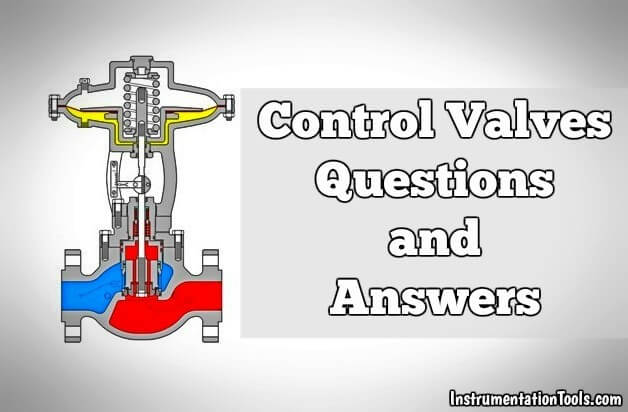
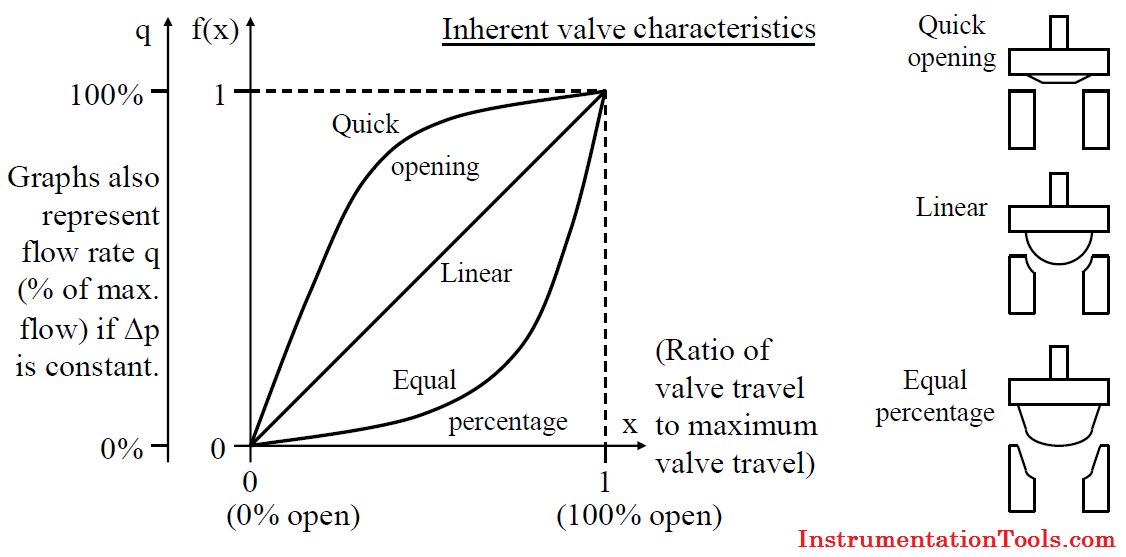
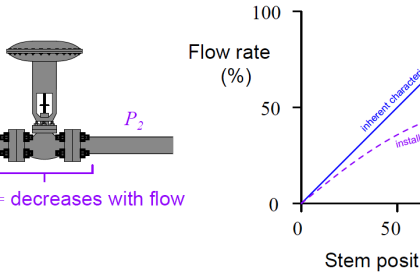
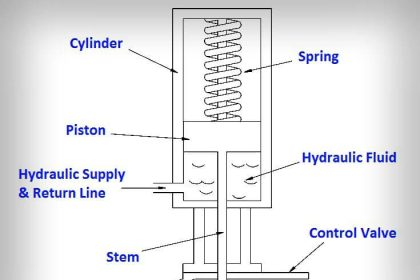
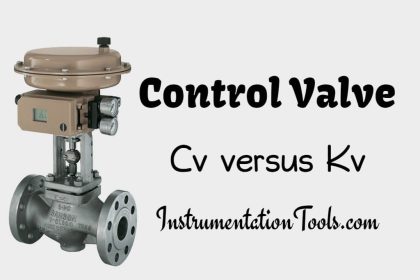
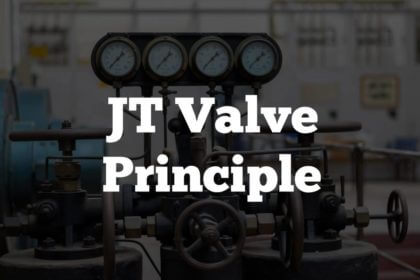
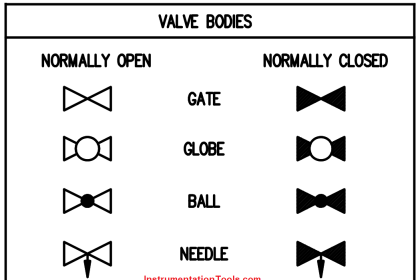
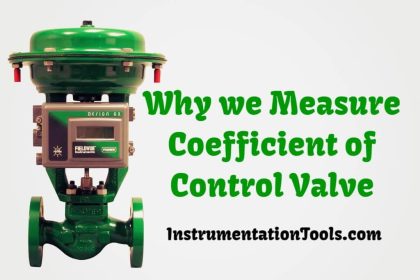
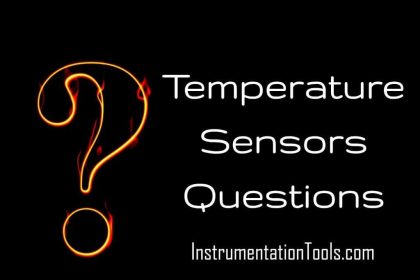
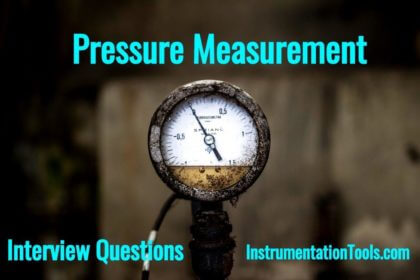
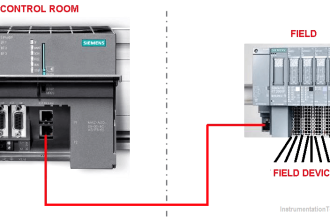
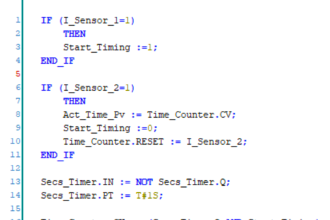
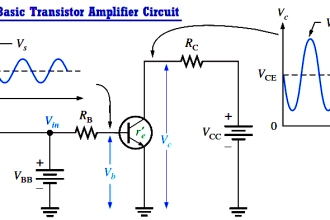
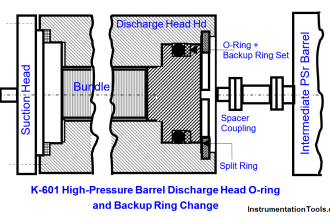



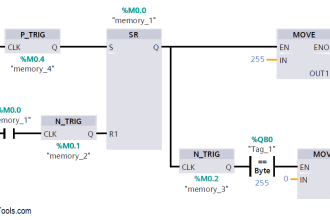

Thanks for that.
Very usefull
Very useful
Thank you very much for your share!
well explained in simplest form…most appreciated.
Really a nice questions ..very much thanks for sharing this questions .
Thanks very much
Very informative thanks to Mr. Bharadwaj Reddy.
According to below question :
What are the different types of actuators ?
The different types of actuators are :
1. Diaphragm Operated.
2. Piston Operated.
i think still we have another type of actuator which is the Electric type ,personally i worked on this type in white hydrocarbon products in Iraq /pumping station and it was used for flow regulation as a control valve using actuator type AUMA /Germany and the principle of working was a control signal from control panel of 4-20 MA as u know 4 Ma for full closed and 20 Ma for full open with flow controller inside the control room to do the action of control and i remember it was installed after the area of main and booster pumps, so kindly confirm or deny this issue in general it was MOV /Motor operated valve use control system for full open and close not 3-15 PSI .and if i’m not mistake the type of valve was Butterfly to do the flow control action
George Ibraheem
Instrument engineer /Iraq
I found this comprehensive, informative and helpful. Some grammar and spelling issues muddied the meaning in several places and a corrective update is desirable.
Might want to revisit your Cv equation.